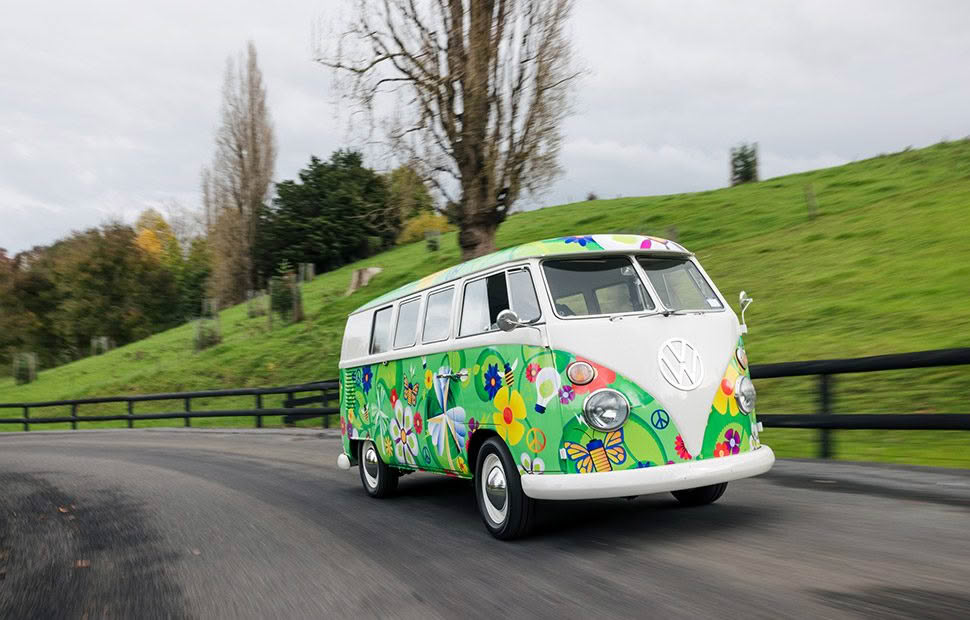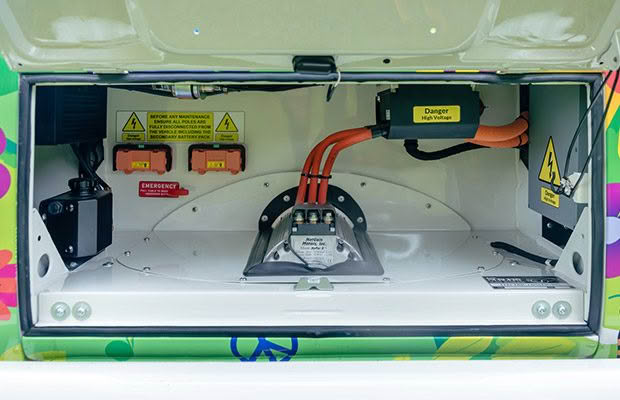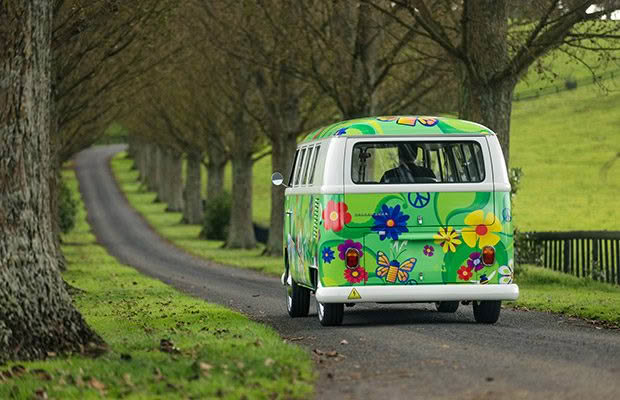An iconic 60s Kombi gets a clean, green makeover SPONSORED

The journey to green energy just got groovier
Created for Volkswagen
Have a beaten-up old relic languishing in the garage? It’s time for icons of the 1950s and 1960s, currently gathering rust and dust, to join the electric revolution. The Volkswagen Kombi has been a pop-culture icon since its invention and the star of such flicks as Little Miss Sunshine and the cover of Bob Dylan’s 1963 album ‘The Freewheelin’. Now it’s receiving a modern-day refresh as Volkwagen ushers its fleet into a sustainable future.
To celebrate the release of its new fully electric ID range, the German car brand has breathed new life into a 1966 classic of its fossil-fuelled former existence and given it a fully electric fit-out. These days KEV — short for Kombi Electric Vehicle — is showing off its funky new paint job and signalling a shift towards a sustainable future.
Volkswagen Special Vehicles Manager Max van den Bergen says the idea was borne after electrical training at dealerships around the country left the team with perfectly good training batteries that could be recycled for another project.
“That’s where the idea came from. We thought, ‘Why don’t we save a Kombi that otherwise wouldn’t go back on the road and electrify it at the same time — using the recyclable batteries?’”

The search for a fitting Kombi led them to KEV. Once belonging to the Dunedin Health Board, the vintage icon was rusting in a South Island garage after the owner pushed pause on a homestyle renovation job. It fitted the bill and kickstarted the journey of turning an icon electric. A custom electric conversion kit was purchased from EV West, which specialises in bespoke EV adaption kits.
Now with a fresh paint job embellished with funky flowers, KEV is on the streets showing off its overhauled interior and repowered clean energy. The Volkswagen team is encouraging others to take up the electrification challenge, having released an open-source ‘greenprint’ for anyone looking to revolutionise their classic.

Using the greenprint, Kiwis can electrify their own Kombi in 20 easy-ish steps. Max encourages keen Kiwis to consult with an expert qualified in high-voltage conversions.
“A lot of the electrical stuff can be daunting as there’s no room for error — you want to get it right.”
“The whole No.8 wire mentality we have in New Zealand is that we love to tinker and engineer,” says Max. “It’s about injecting passion back into the older vehicles.”
These classic models are often displayed at the VW Nationals, an annual meet-up of Volkswagen enthusiasts and their prized possessions. It’s been going for more than three decades, and at the next, they’d love to see some converted electric-powered Kombis make the journey.
Those wanting to repower their own vintage Kombi with clean energy should head to the website.

UNDER THE HOOD
“We bought the vehicle as a shell — that was what it was when we got it,” says Max. It was sent to Wellington to begin the restoration process. “The team took it down to the metal and did a beautiful job.”
The process took research, tinkering and a lot of coffee. Thankfully, the engine was already removed, but the tired battery needed to be disconnected. And the redundant throttle cable, fuel tank, and fuel filler hose were all retired. In their place? Recycled battery cell packs and voltage cables that power KEV’s pièce de resistance: his new electric motor heart.
Love this story? Subscribe now!
 This article first appeared in NZ Life & Leisure Magazine.
This article first appeared in NZ Life & Leisure Magazine.
